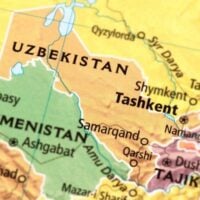Deadline: 7-Jun-23
The National Forest Foundation (NFF) is excited to announce changes to its flagship competitive grant program, the Matching Awards Program (MAP).
The resulting program, MAP: Connecting People to Forests, focuses primarily on in-person community engagement and completion of appropriate stewardship activities. Program goals are to create lasting change that will allow all communities, especially underserved communities, opportunities to benefit from activities on National Forest System lands or adjacent public lands.
Focus Areas
- Community Engagement
- Community engagement, defined as in-person involvement of the public, must be the primary focus of every project funded under MAP. The National Forest Foundation recognizes that communities across the country have varied histories and experiences with public lands and expects that effective and appropriate engagement experiences will vary. Eligible occasions for community engagement in public lands include, but are not limited to:
- Public lands days, cleanup days, and similar events
- Field trips for schools or collaborative groups
- Outdoor skills training
- Indigenous ecological practices
- Ceremonies or celebrations related to natural resources
- Trail or site ambassador programs
- Community science projects
- Eligible public involvement in those opportunities may be paid or volunteer. Youth conservation corps, other types of paid service crews, event attendees, and volunteer participation are all considered public engagement.
- Community engagement, defined as in-person involvement of the public, must be the primary focus of every project funded under MAP. The National Forest Foundation recognizes that communities across the country have varied histories and experiences with public lands and expects that effective and appropriate engagement experiences will vary. Eligible occasions for community engagement in public lands include, but are not limited to:
- Stewardship Activities
- In addition to a focus on public engagement, stewardship activities must be a component of every project proposed to MAP. The participants of the groups engaged must complete eligible stewardship-oriented activities that result in benefits to the National Forest System. Benefits may be direct, such as trail maintenance or trash cleanup, or indirect.
- Eligible activities include, and are not limited to:
- Recreation area cleanup
- Native trees and shrub planting
- Trail maintenance
- Invasive species control
- Forest and watershed restoration
- Hazardous fuels reduction
- Ecological or social monitoring to inform management decisions
- Educating others about sustainable recreation principles
- The NFF will consider proposed activities in part on the applicant’s ability to connect the particular populations the project is seeking to engage to public lands, not only on their scale of impact on the ground.
- Advancing Diversity, Equity, and Long-Term Benefit
- Through MAP, the NFF is reaffirming its interest in expanding environmental and conservation work and who participates in this work, acknowledging that many underserved communities have historically not benefitted from investments on public lands. The selection committee will prioritize projects that aim to create opportunities to advance equitability and the diversity of beneficiaries, whether during the MAPfunded performance period or in the future. Projects that are part of a long-term strategy to create or inspire connection to public lands will also receive priority.
Funding Information
- There is not an official minimum or maximum award amount for the MAP program and successful proposals vary widely in budget size. In recent years, NFF has considered applications ranging from less than $5,000 to over $80,000. The NFF suggests that new MAP applicants submit applications requesting $35,000 or less.
- Proposed project periods may be no more than 18 months long. For this round, grant performance periods will begin in August or September 2023, and extend for 12 to 18 months depending on grantee preference.
Eligibility Criteria
- In order to receive MAP funds, an award recipient must raise an equal amount of additional, matching non-federal cash funds as match. In-kind contributions and federal funding are NOT eligible to meet MAP matching requirements. Both MAP and matching funds:
- Must be paid to the applicant organization and deposited in the applicant organization’s bank account;
- Must support the same project activities and be expended within the same performance period;
- Must be used to advance the 501(c)(3) exempt mission of the NFF and cannot support litigation or advocacy;
- Cannot support general administrative purposes beyond eligible indirect costs;
- Cannot be directed to the U.S. Forest Service or any other federal entity;
- Cannot be used to meet the matching requirements of any other federal funding program.
- Upon selection for funding, award recipients must submit documentation showing the receipt of eligible non-federal matching funds to the NFF.
- Nonprofit organizations, Tribal governments and organizations, and universities are eligible to receive MAP grants.
- The NFF does not consider MAP applications from federal or state agencies, local governments, individuals, or for-profit organizations.
For more information, visit National Forest Foundation (NFF).









































